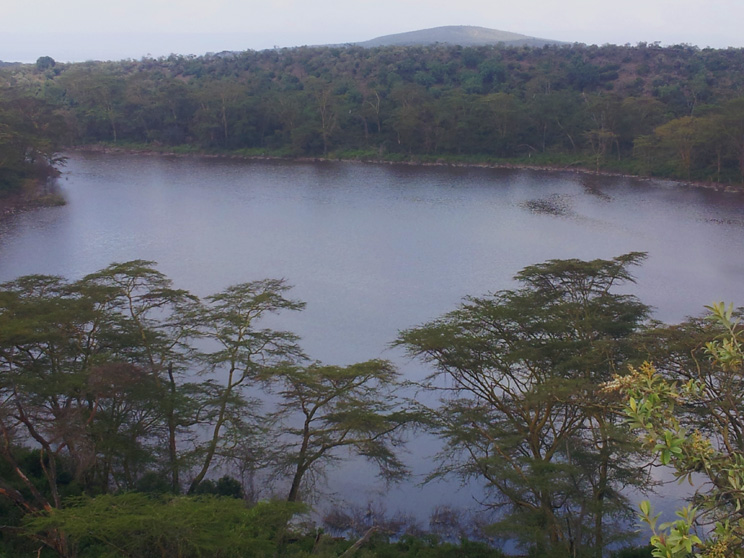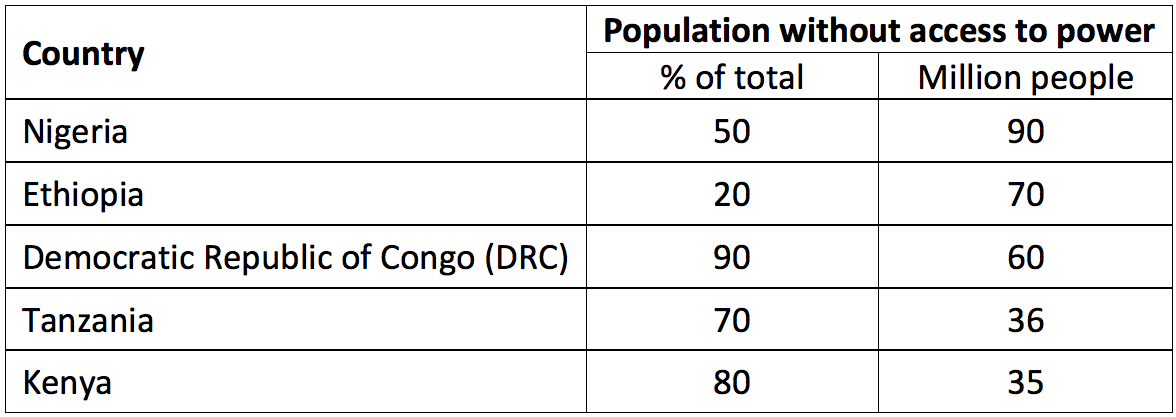Flying over Africa during the day is just spectacular. If you fly from East to North Africa, watching the Nile River is absolutely impressive (6,853 Km. long!). Unfortunately, I haven’t had an opportunity to see the Congo River. I hope to see this one at a close distance and not from the sky: its flow of 42,000m3/s is second only to the Amazon. Can you imagine its power? …And its potential as a source of hydroelectric power? No wonder this is part of Africa’s Agenda 2063!

The Grand Inga dam mega-project is intended to turn that potential into reality: the goal is to generate 40,000 megawatts (MW) at the end of the project’s seven phases. Enough to light up half of Africa.
To give you an idea of the power deficit, these are the countries with the greatest shortfalls (source: ISI Consultants)

The first two phases of the project were completed more than 30 years ago. With total potential generation capacity of 2,132 MW, in 2013 they were operating at 40% of capacity, according to Peter Fabricius from the Institute of Secutiry Studies. In 2014, the World Bank and the African Development Bank committed US$ 106 million (73 and 33) to get Inga 3 started. This would add 4,800 MW of generation capacity.
Critics of the project claim that very little of the electricity generated will go to the local communities, and the environmental cost can be substantial. Not to talk about the potential for corruption around the tendering process.
Construction was planned to start in 2016. But the World Bank suspended project financing last summer putting the project as risk as other potential financers are likely to flee. The reasons? Concerns that environmental and social standards would be overlooked.
There’s an urgent need to bring power to the citizens, and to make the infrastructure reliable for companies. But the signal that the World Bank is sending to politicians goes in the right direction. If the 2063 Agenda is to bring a positive transformation to Africa, environmental and social impacts need to be taken into account when implementing its projects. Do you agree?
Related posts


Interesting! I have been following closely the Africa Agenda 2063 and how some countries, particularly in East and Central Africa, are responding to it. In fact, this region has put the industrialization sector as a priority.
However, looking at the Power Deficit Table above, yes, the numbers aren’t appealing …. there’s a lot that needs to be done here before 2063 – e.g. reaching the rural population, sensitizing the role of (indigenous) industrialization and preserving the ecology. In fact, the majority of the population in this region remains in rural places. Compared to urban places, its an area (rural) that is often neglected, and seen as not necessarily urgent for investment in industries! To me, the rural population remains an important (untapped) market for the industrialization process. If countries in the region talk about developing (indigenous) industries, for example, it has to come from the rural population. It’s where most raw products for urban consumption come from, and the labor force is huge. As for the environment, the region could consider investing heavily in solar power and windmill services for the rural population. This would as well be a catalyst in transforming the rural socio-economic livelihood …
Thanks Africa for this interesting conversation.
Aloys
Thank you for your comments, Aloys. I agree that industrialization in the rural areas coould be one way to achieve the transformation of the continent. Of course, this requires high investments in infrastructures — not only in energy but also transportation, etc. And this should be coordinated with the creation of small smart cities — for those interested, you may want to look at my post of a few weeks ago on “Smart cities’ challenges in Africa.”
Good for the innovation but really sad that the local community get’s a little piece of the electricity… Building this in a place with a lot of corruption isn’t a good idea.. maybe first fix that.. Otherwise there will open a new door for corruption… Solar power is a good investment for Africa i’m curious if Akon is one of the financial supporters of this project..
Yes, solar power has enormous potential in sub-Saharan Africa (and in Northern Africa as well).
I checked about Akon and I got the impression that he’s not involved with the Grand Inga project — but I can’t tell for sure.
I am afraid I don’t share your views.
The Inga mega project will not benefit Congo’s industrial development but exclusively that of RSA (DRC’s direct competitor).
Also, the US Congress (alerted by the NGO” INTERNATIONAL RIVERS “) voted against the funding by the World Bank since the construction of mega dams worldwide is proved a disaster for both ecological and social reasons.
It is especially challenging to notice that the development of such projects is the fact of dictatorial countries such as Congo knowing that projects of such a scale have not the slightest chance to succeed in developed countries as ours.
Last but not least, the existing Inga structures are widely sufficient to supply the country with electricity knowing that only 11 % of the local population is connected to Inga electricity.
Hi March-Henry, I believe what you say is captured in the post: “the signal that the World Bank is sending [by withdrawing funding] to politicians goes in the right direction. If the 2063 Agenda is to bring a positive transformation to Africa, environmental and social impacts need to be taken into account when implementing its projects.”
Thank you for sharing this info
You’re welcome!